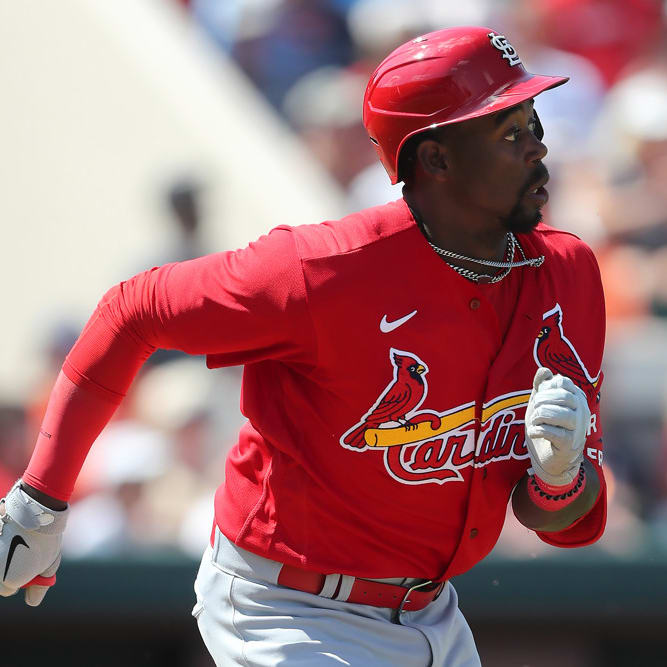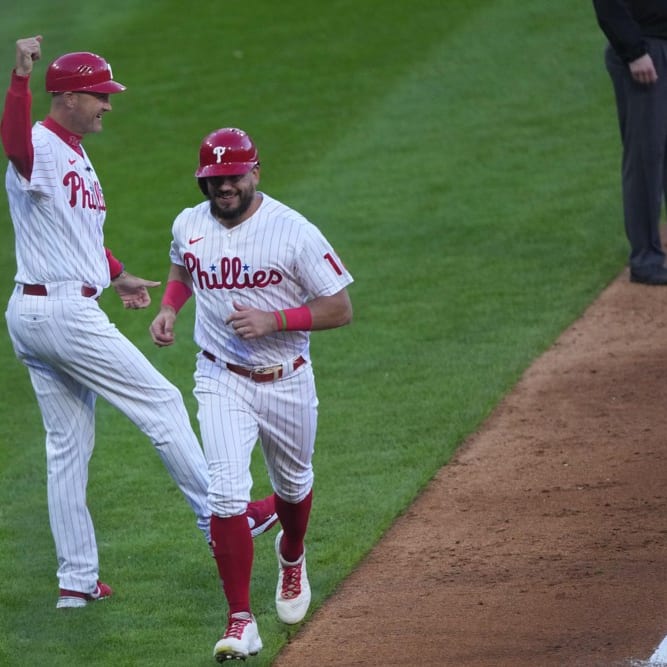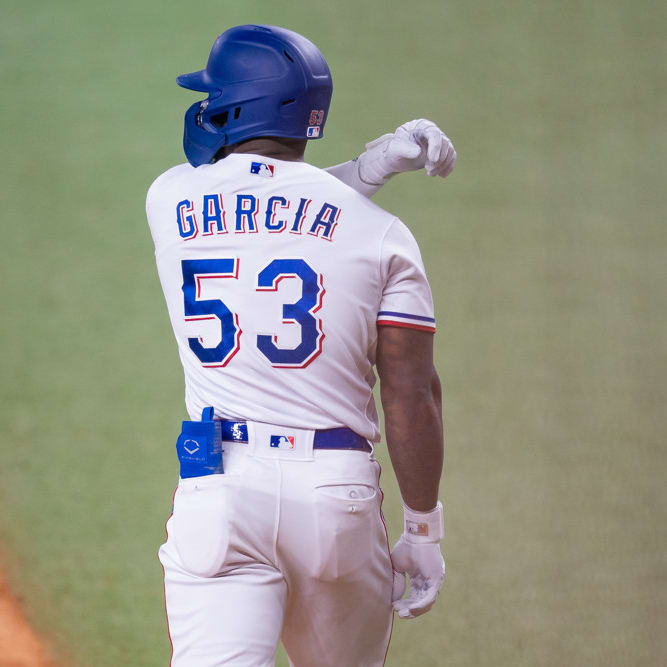This article is part of our The Wheelhouse series.
"Everyone has a plan until they get punched in the face."
Mike Tyson said it first, but it's become a mantra of fantasy industry folks explaining how plans can quickly change while building a roster in an auction setting if the room is significantly more aggressive than your projected values.
In many auctions I've been a part of, buying players early has paid off in the form of small discounts. The limitless combination of players available often makes owners more conservative with their spending until the market foundation is established.
Defending Tout Wars Mixed Auction champion Zach Steinhorn started Saturday's proceedings by nominating Jose Altuve, and subsequently winning him at $42. Because the league uses OBP, that price seemed fair, and even $2-3 above my expectation. My immediate thought was that the other top hitters in the pool -- Mike Trout, Mookie Betts, Nolan Arenado, Kris Bryant, Paul Goldschmidt -- would be priced off of that number, and perhaps even more after one of Trout or Clayton Kershaw was sold. This has been the pattern in typical years, anyway.
Kershaw came up for bidding next, and I was happy to get him at $44, since my projection was $45 and as I've said and written for a long time, I'd rather be at or even slightly above projected prices at the top end of the player pool than in the middle, because I have found overpaying in the mid-tier to be more risky.
With Kershaw in hand at $44, I expected Trout to sell at $46-47, and I expected to have him paired with Kershaw in the first 10 minutes of the auction. Before Trout was on the block, Giancarlo Stanton sold for $29, which was another $5+ over my expectation.
When Trout was nominated, Al Melchior of Fangraphs went to the mat and came away with him at $51, and I started thinking about the best way to go about spending my money early on in a scenario where players might be going $5+ above my values as opposed to the usual $1-2 at the top. The next wrinkle came immediately after the Trout sale, as Scott Engel walked away with Trevor Story at a very fair $27.
I could tell I didn't have a good read at all on what was going to happen next, and the flurry of players sold the first time around the table included this group:
Buster Posey -- $28 -- Jeff Zimmerman
Trea Turner -- $34 -- Tim Heaney
Billy Hamilton -- $24 -- Gene McCaffery
Charlie Blackmon -- $34 -- Joe Pisapia
Manny Machado -- $39 -- Scott Pianowski
Carlos Correa -- $33 -- Bret Sayre
Mookie Betts -- $42 -- Bret Sayre
Kris Bryant -- $45 -- Fred Zinkie
Nolan Arenado -- $40 -- Fred Zinkie
Kyle Schwarber -- $27 -- Bret Sayre
Looking back, pushing Correa to $34 would have been a good idea. Things started to stabilize with Betts at $42, and I really wanted Bryant, but I backed off and decided that $46 was above my overpayment threshold. While I was tilting about Bryant, Zinkie struck again on Arenado at $40, which I consider to be a mistake on my part and from the room as a whole. Paul Goldschmidt jumped to $50 a few players later, and suddenly the early first-round talent was all gone, and I didn't have a second piece to pair with Kershaw.
I did not spend on saves when I won this league in 2014, which has made me much more content to pass on closers when I don't like the prices in the past. Fortunately, I was able to secure Kenley Jansen at $22, further stabilizing the Kershaw ratios and locking up 35-40 saves along with a strikeout boost for a mid-tier starter (compared to landing the lower K-rate closers that cost significantly less later on).
I made another mistake early when the bidding stopped at $40 on Joey Votto, who went to Ron Shandler for pennies above my projected number. If nothing else, I should have pushed Ron up to $44 while maxing out at $43 since Tout Wars uses OBP in place of batting average. In all honesty, I think I was tilting about the Votto mistake when Corey Seager sold at $27 to Bret Sayre.
Things were beginning to unravel. Usually, I push the bidding up on players and come away with a core that I really like before the first 30 players are sold. This year, aggressive spending early was getting to me, and I failed to adjust quickly enough to get the occasional good buy from the first 30-40 hitters.
Before I had a hitter on my roster, I purchased Mark Melancon at $18, ensuring a "safe" second closer (only an injury can take his job away) and hopefully supporting the Kershaw-Jansen ratios. Without the most balanced five-category bats, I was already thinking about the possibility of being below my targets for stolen bases, which is where I expected to spend most of my in-season FAAB resources since I should be able to avoid chasing closers with $40 already invested in the position.
Letting Ryan Braun sell at $30 to Pianow felt like another error, as did allowing Matt Carpenter to go for $30 to Engel, so I went full tilt and paid up for Nelson Cruz at $33, finally going $5 over to get a hitter. At that point, I was viewing the market as one where I could afford to overpay on one higher end hitter because of the excess spending that had taken place. There wasn't going to be enough quality offense on my roster if I didn't break the bank once...at least, that was my thought at the time.
A non-target for me in the early rounds of drafts I've done thus far, Rougned Odor was cheaper than I would have expected, even with the lower OBP projection (.317 here, .314 for Steamer), selling for $19. It seemed as though the early spending wave was finally subsiding, and I was able to add Robinson Cano ($27), Kyle Seager ($20), and Rich Hill ($12) before the first break.
After an hour, this is what I was looking at:

Odor was 14-for-21 as a basestealer last season, and his low OBP, big pop skill set doesn't portend much of an increase. I'm actually expecting 8-10 bags this year from him instead of a repeat. Seager, Cano, and Cruz (no, I'm not a Mariners fan, and no I'm not worried about having three key hitters from the same team) don't run much at all, so the possibility of missing out on speed if the cheap speed threats were getting pushed up too much in the middle and final third of the auction was a definite concern.
For the teams I have built around Kershaw, the goal has consistently been to dominate all five pitching categories by supporting his ratios with elite closers, and making sure to get a quality third-tier starter with more ERA and WHIP driven value than strikeouts or innings-based value. Rich Hill fits that description perfectly, and it's hardly a surprise that the "Kershill" strategy has been executed by others.
Call it #KershillPlan! Kershaw/Hill drafted together all wknd:H2H: @kroyte (43,12)Mixd: @DerekVanRiper (44,12) NL: @DerekCarty (45,16)
— Brent Hershey (@BrentHQ) March 26, 2017
One big benefit of the aggressive spending throughout the room was the clear path to a favorable endgame, which was particularly helpful for me as a team that wanted to go cheap with the rest of my pitching staff anyway after spending heavily on the first four spots.
If your auction plans start to fall apart, there are two things to keep in mind.
1. In the first hour, you still have plenty of time to make adjustments.
Ideally, you'll have a break an hour or 90 minutes into the auction. If things are going terribly, you'll have an opportunity to gather your thoughts without worry about the players being sold, come up with a group of players to target, and get a feel for how much above your price you may be willing to go if the roster is too thin. If you've overspent, you can take inventory of what you have, and begin to determine which categories or positions should get the most attention with your remaining depleted budget and try to flag your favorite $1-2 targets.
On Saturday, I decided at the first break that I wasn't going to spend money on more than one catcher in order to max out the offensive production available at other positions with my remaining budget.
I also took a few minutes to review the best sources of stolen bases remaining in the pool. This way, I had thought about whether I would go the extra buck or two on Keon Broxton, Travis Jankowski, or Jarrod Dyson.
2. The sooner you bury a mistake, the better.
It would have been easy for me to dwell on paying $33 for Cruz when I had him valued at $28. Had I done that, I may have missed out Odor, Seager, and/or Cano.
If I had started thinking about the players that slipped away, the same thing could have happened because of the lack of focus. Don't let one mistake spiral into a string of them.
Putting it Together
To begin the season, here's what my initial roster looks like...
C -- Chris Iannetta, ARI, $1 -- Iannetta had his best hard-hit rate (34.9%) since 2008 last season. He's walked at least 11.2% of the time in each of his MLB seasons. There are worse $1 catcher options out there.
C -- Tony Wolters, COL, $1 -- An all-glove backstop with value when the Rockies are at home, Wolters will get a surge in playing time while Tom Murphy (wrist) is on the DL. I will be looking for help at this position on the waiver wire early and often.
1B -- Greg Bird, NYY, $7 -- One dollar for every homer this spring. More importantly, Bird has proven that he's healthy this spring after missing 2016 following surgery to repair a torn labrum, and Yankees manager Joe Girardi named him the team's starter at first base last week. Yankee Stadium boosts home runs for left-handed hitters 46% more than a neutral environment, second only to Miller Park (49%) over the last three seasons.
2B -- Robinson Cano, TEX, $27 -- Cano gets dinged when OBP replaces average, but he'll do everything else I need other than collect steals.
SS -- Jedd Gyorko, STL, $1 -- Versatility and cheap power in the endgame is often available with Gyorko. His HR/FB rate jumped from 13.7% in 2015 to 24.4% last season, so it's wise to expect 20 homers this time around rather than 30.
3B -- Kyle Seager, SEA -- $20 -- Maybe he'll never have a .359 OBP again, but Seager has been one of the most steady hitters in the game over the past five seasons.
CI -- Travis Shaw, MIL -- $2 -- Only two parks were more difficult for left-handed hitters to homer in than Fenway from 2014-2016 (Petco and AT&T Park). Shaw won the park factors lottery when the Brewers acquired him from the Red Sox in the Tyler Thornburg deal this winter.
MI -- Rougned Odor, TEX -- $19 -- He's not made for an OBP format, but a lower K% would push up his average and OBP if he's putting the ball in play more frequently.
OF -- Nelson Cruz, SEA -- $33 -- I'm on Team Jenstad as far as my willingness to bank on Cruz's big power numbers.
OF -- Ben Zobrist, CHC -- $16 -- Cheap OBP, runs, RBI, and ~15 HR power at the price seemed very fair.
OF -- Stephen Piscotty, STL -- $15 -- I'm not worried about his numbers in Florida this spring. He does a little bit of everything for a team that generates a ton of runs.
OF -- Keon Broxton, MIL -- $9 -- He strikes out a ton, but the OBP adjustment really helps Broxton since he walked at a 14.8% clip for the Brewers last season. As a high-risk, high-reward sleeper for many this spring, I was surprised that he didn't go for $3-5 more.
OF -- Leonys Martin, SEA -- $2 -- Another Mariner. Martin has two 30-steal seasons under his belt, but I think 2016 (24-for-30) is a better baseline since his OBP has fallen short of 2013-14 levels in each of the last two seasons.
UT -- Michael Brantley, CLE -- $2 -- He's been productive in limited chances with Cleveland this spring, playing in five games since debuting just over a week ago. I'd happily take the 2015 version again at this price if he's completely past his shoulder woes.
P -- Clayton Kershaw, LAD -- $44 -- Another draft, another share of Kershaw. Did I back him up correctly?
P -- Kenley Jansen, LAD -- $22 -- In addition to crushing ratios, I did not want to chase saves with the rest of the league throughout the season.
P -- Mark Melancon, SF -- $18 -- Only an injury can remove Melancon from the ninth-inning role for the Giants.
P -- Rich Hill, LAD -- $12 -- It may only be 140-150 innings, but Hill looked the part of a fantasy ace last season.
P -- Vince Velasquez, PHI -- $3 -- An excellent strikeout rate with ratio risk, Velasquez offers upside and I have some ERA/WHIP wiggle room to play with if the top-four arms on my staff meet expectations.
P -- Ivan Nova, PIT -- $1 -- I was stunned Nova didn't go for at least $5. PNC Park masks many of his flaws as it's nearly neutral for left-handed power hitters and very pitcher-friendly toward right-handed power.
P -- Mike Foltynewicz, ATL -- $2 -- The control gains from a year ago have held up so far this spring (five walks, 23.2 IP).
P -- Michael Wacha, STL -- $1 -- It's easy to wonder if he was healthy for more than a handful of starts last season. Like Hill and Velasquez, the workload he can withstand is a legitimate question.
P -- Daniel Norris, DET -- $2 -- There's nothing better than waking up a few days after your draft to see a report of "dead arm" on one of your favorite young pitchers after he gets shelled. I may take a wait-and-see approach on Norris before activating him, which pushes Chad Kuhl closer to my lineup.
R -- Jae-Gyun Hwang, SF -- For now, the Giants are stashing him at Triple-A after he accepted an assignment to Fresno (he has a July 1 opt-out). Hwang impressed this spring after a 25-25 season in the KBO as a 28-year-old in 2016. Left field and first base are on tap for him in the minors, which gives him additional path to playing time if injuries or ineffectiveness strike the Giants infield, or Jarrett Parker.
R -- Gerardo Parra, COL -- My hope is that Coors can make him a .300 10-10 guy with a lot of runs scored and RBI potential while he's getting regular run in the absence of David Dahl.
R -- Zack Cozart, CIN -- Insurance in case Jedd Gyorko's playing time dries up more than I expect.
R -- Chad Kuhl, PIT -- Kuhl is mostly a home streamer to begin the season, but he's pushed an ERA below 2.50 at Double-A and Triple-A over the last two campaigns.
R -- Ketel Marte, ARI -- Sent to Reno on Tuesday, Marte will likely be among my first cuts. The hope when I scooped him up late was that he'd play his way into a larger role after beginning the season as a backup to Chris Owings.
R -- Jhonny Peralta, STL -- The thumb injury that caused him to miss 57 games to begin 2016 almost certainly played a role in his big step down at the plate. Maybe he's done, but maybe getting more regular days off will actually enable him to return to his 2014-2015 levels on a per-game basis.
Helpful Links
All buys, in order are available here.
Draft Grid Results are available here.












